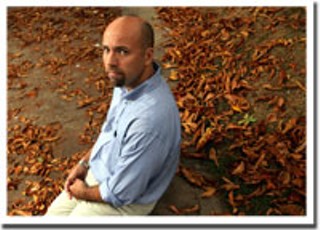Andy Fillmore was excited about last Tuesday. He and his two working partners from the Toronto-based design firm Office for Urbanism were scheduled to meet with the entire city council to discuss HRM by Design, a $200,000 planning project focused on downtown Halifax and Dartmouth—a chance to directly explain and promote the project, and hopefully, get councillors on board with the project’s vision.
“We were going to set the hook in their mouths for this project and really sell them—really get the ball rolling,” Fillmore recalls. “And then, they cancelled it. They thought their agenda was too busy and they cancelled it that night. They ended up debating those day-glow trailer signs. There’s another thing that, in theory, the design strategy would take care of. Unfortunately, they chose this long debate rather than the thing that could have solved the problem....” He catches himself, and pauses. Then he laughs. “A little bit of frustration may be seeping out there. But I’m trying to keep calm about it!”
He may not have made it to council (“We’re working hard to get a workshop with them”), but Fillmore still spent much of last week explaining HRM by Design at a series of public forums and stakeholder meetings. The goal was to get the word out early—and often —in order to generate more public participation, which Fillmore hopes will carry through to the end of the project in the fall of 2007.
It may prove a difficult task. Although last week’s Monday night meeting in Halifax and Wednesday’s public session in Dartmouth were both relatively well-attended, the week’s Thursday night wrap-up drew a thin crowd: roughly 50 attendees, some of whom were members of the design team.
“We were a bit disappointed in Thursday night’s final showing,” says Fillmore. He says that especially on the Halifax peninsula, there may have been a bit of fallout after what happened on the Spring Garden and Queen development project, where the public was asked to participate in the planning process last spring, only to find out later that much of the discussed property had already been divvied up for development. When the news broke, Fillmore was also taken by surprise.
“It turns into people saying, ‘All those meetings were a waste of time,’ or ‘Those meetings were a sham,’ and that the whole thing was a done deal in the backroom before you even started the public process. I mean, that’s all not true, but it doesn’t really matter because that’s what people believe.”
In addition to the challenge of engaging a wary public, Fillmore is also trying to work past another troubling and familiar problem: On Thursday night, a pro-development audience member and a member of the Heritage Trust got into a heated argument over the direction of downtown development. Jennifer Keesmaat, a speaker from the Office for Urbanism, was eventually forced to intervene (as she put it, “in the name of civility”).
“They’ve seen this dynamic before: Entrenched pro-heritage, anti-development views versus entrenched pro-development anti-heritage views,” says Fillmore, referring to his two colleagues from the Office for Urbanism. Their experience, he hopes, will be able to move this town beyond simply a polarizing argument about height versus heritage.
“The idea is to change the whole discussion. You’re not going to get anywhere trying to have that same discussion over and over again. It’s more effective to change the discussion. That’s what they were trying to do.”
Fillmore’s hope is that as HRM by Design moves forward, that discussion will eventually shift to more positive, constructive and general ways to direct development—not simply a debate over individual developments, but setting a better standard across the city.
“Take, for example, a downtown—one of the goals we’re talking about...A dense downtown eliminates the expensive servicing of the suburbs, it creates economic development, it reduces homelessness, it increases job rates, it increases the tax base...it is actually a panacea. It’s the only panacea that’s available to us,” he says. “You can try to micromanage and fix all of those problems individually, but this project is really what ties it all together.”












